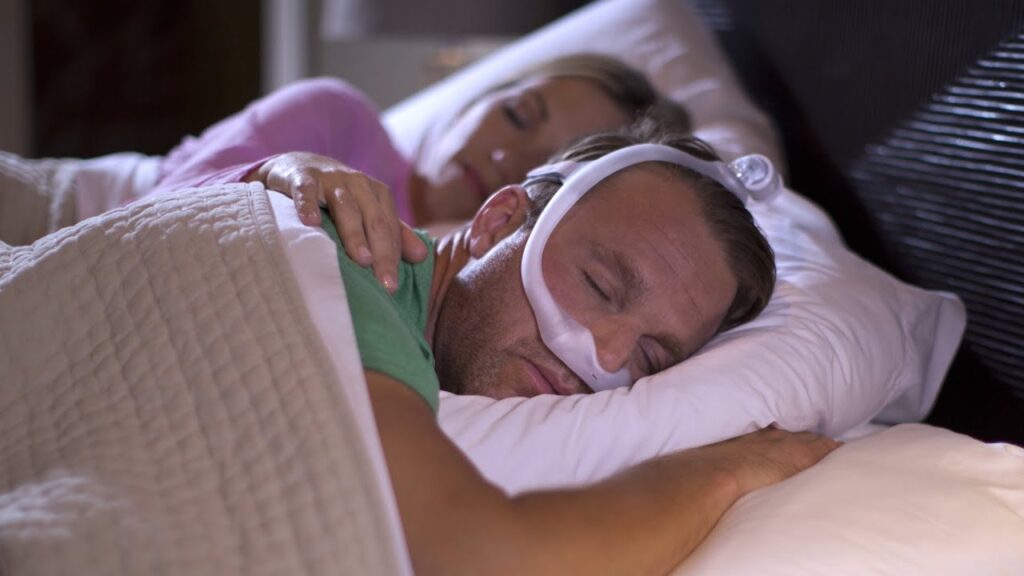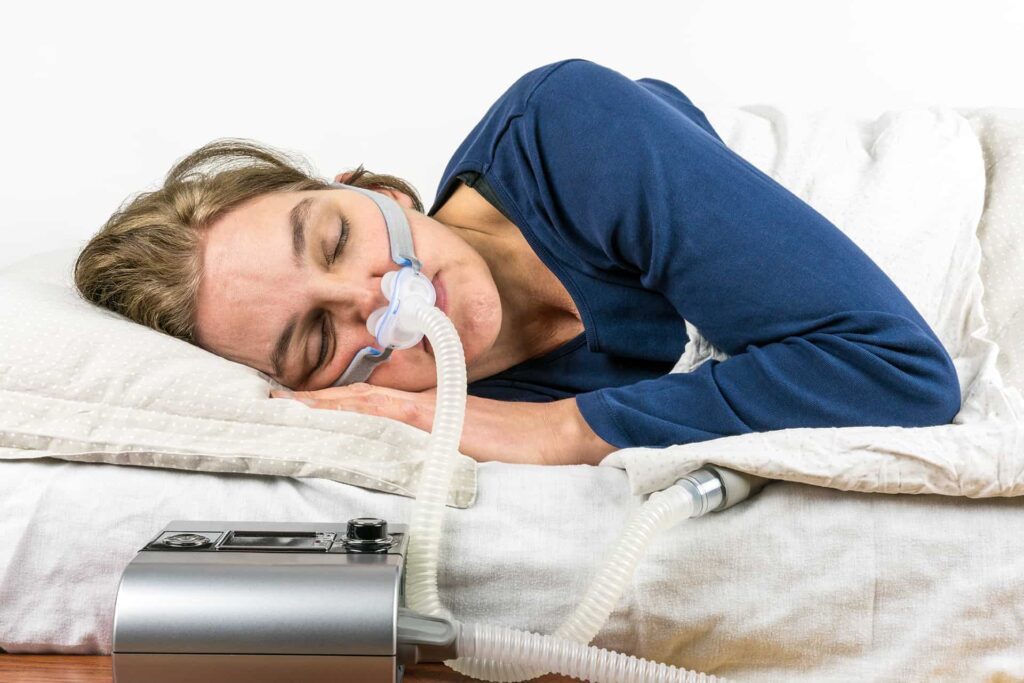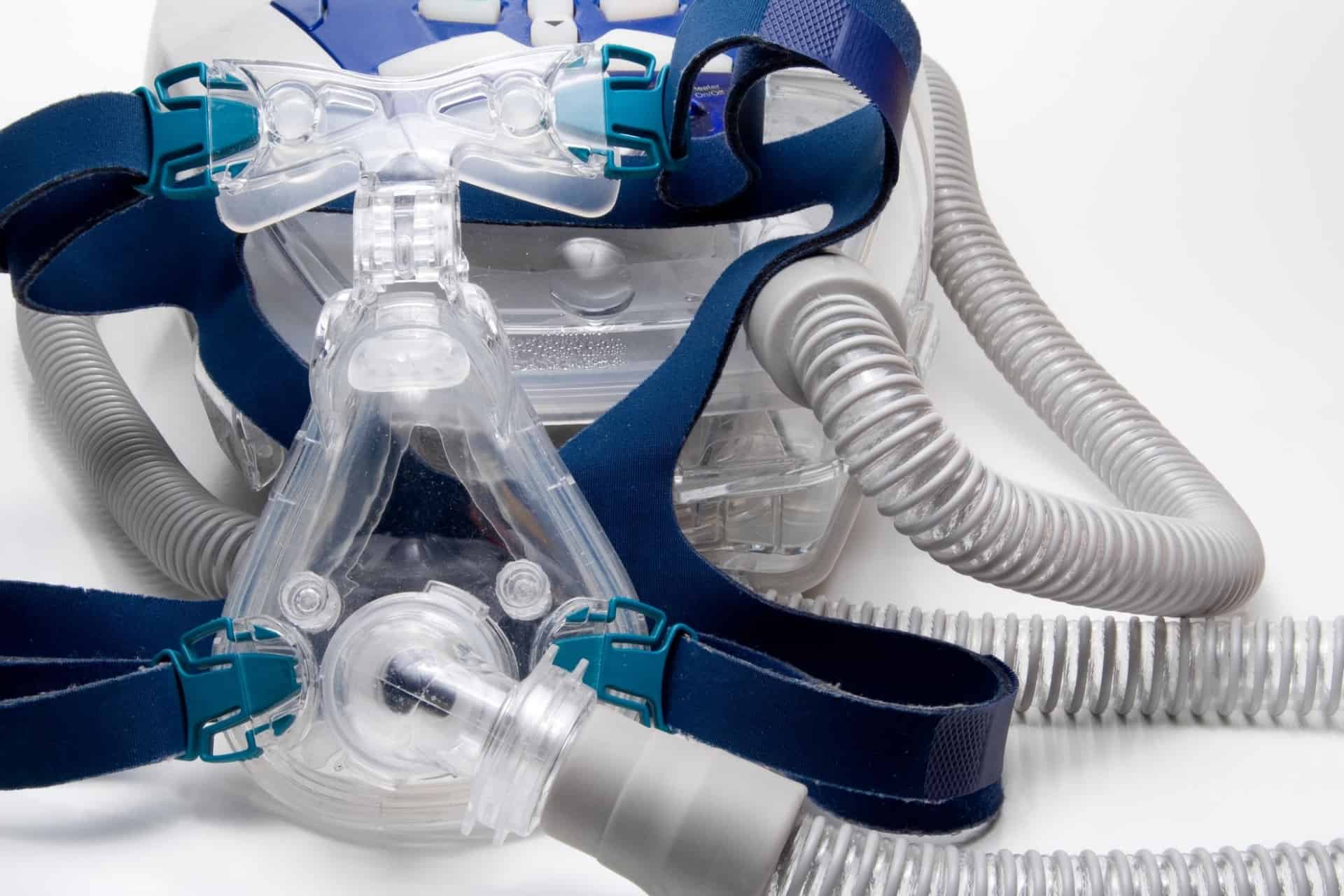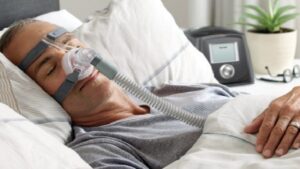The most often recommended technology for treating sleep apnea problems is a continuous positive airway pressure (CPAP) machine. Breathing pauses or interruptions are brought on by obstructive sleep apnea (OSA), often as a result of your throat or airways suddenly collapsing or being temporarily blocked by anything.
CPAP masks continuously blow pressured air into your mouth and nose while you sleep. You can breathe properly as a result of keeping your airways open. Let’s examine more closely at how this device works, the benefits and drawbacks of using one, and alternative treatment options for sleep apnea.
How is a CPAP machine operated?
A continuous stream of pressured air is produced by the motor (compressor) of compatible CPAP masks and is sent into a flexible tube after passing through an air filter. A mask that is sealed over your mouth or nose receives filtered air via this tube.
The CPAP masks’ airstream pushes against any obstructions in your airways as you sleep, clearing them so your lungs can get enough of oxygen. Your breathing doesn’t stop since nothing is preventing the oxygen from flowing. As a consequence, you don’t need to continuously wake up to start breathing again.
Related: The Risks Involved When Buying a Second-Hand CPAP Machine

Do CPAP devices come in a variety of designs?
All CPAP machines have the same fundamental parts:
- Headpiece frames
- a motor contained in a base unit; a cushioned mask; a tube connecting the motor to the mask
- “elbow” components that serve as joints
- adjustable straps that let you change the device’s fit.
Different kinds of masks
CPAP devices come in a variety of CPAP masks. Depending on your breathing patterns, how comfortable the mask is for you to wear, and the sort of sleep apnea disease you have, you may use one of many types.
The following are some of the numerous CPAP masks varieties:
Nasal CPAP masks.
This kind of mask contains a little cushion that covers the region around your nostrils. It could also have prongs on the end that go into your nostrils. You may use your glasses with ease while using this mask. It also works great if you have thick facial hair that can make a bigger mask difficult to wear comfortably.
Nasal masks
This kind is a padded mask that completely encloses your nose. If you move around a lot when you sleep, it could be a better choice. High-pressure airstreams may be delivered by it.
Full-face CPAP masks
Your lips and nose are covered by this kind, which has a triangular form. If you breathe via your mouth while you sleep or have a blockage of some kind in your nose, your doctor may advise you to use this type of mask.
What distinguishes CPAP, APAP, and BiPAP devices from one another?
The APAP and BiPAP devices are within the category of breathing machines. They vary as follows:
CPAP equipment.
This apparatus is set up to generate pressured air at a constant air pressure level. Resetting the device’s settings will allow you to adjust the air pressure.
An automated positive airflow pressure device (APAP).
This kind continuously monitors your breathing throughout the night. In order to account for changes in your sleeping position or potential breathing alterations brought on by drugs, the air pressure is automatically adjusted.
BiPAP (Bi-level positive airflow pressure).
This gadget has two pressure levels, one for breathing and one for exhaling that is less intense. It is used by people whose blood carbon dioxide levels are too high or who cannot tolerate CPAP equipment. For individuals with central sleep apnea, BiPAP devices may additionally have a backup respiratory rate. The biggest challenge with central sleep apnea is starting to breathe, therefore the backup respiratory rate makes sure the individual is breathing.

What are the benefits and drawbacks of CPAP use?
There are advantages and disadvantages to using CPAP masks, as there are with many other kinds of therapies. The recognized benefits and drawbacks are listed below.
Benefits
The advantages of utilizing a CPAP machine are widely known. As you sleep, these devices provide your body with a constant flow of oxygen. By doing thus, they aid in preventing the short breathing pauses that characterize sleep apnea.
Longer-term CPAP usage often results in greater advantages.
Benefits of using a CPAP machine Include: improving your ability to sleep through the night; lowering your risk of heart attack, stroke, or other cardiovascular events; assisting with blood pressure reduction; decreasing excessive daytime sleepiness; and possibly lowering blood sugar and cholesterol levels.
Medicare or insurance both cover CPAP machines?
If you have been diagnosed with sleep apnea and are a Medicare Part B beneficiary, Medicare may cover 80% of the cost of your CPAP masks, provided the physician who prescribed it is a Medicare-approved provider.
Whether you are renting or purchasing the gadget, you are still required to pay your deductible and 20% of the total cost.
You should review your plan’s rules before buying or renting durable medical equipment (DME), such as CPAP machines, if you have a Medicare Part C (Medicare Advantage) plan.
Depending on whether you’re buying a CPAP, APAP, or BiPAP equipment, breathing machines without insurance coverage may cost anywhere from $500 to $3,000.
Alternatives for treating sleep apnea
CPAP machines don’t help everyone with sleep apnea because of their limitations.
Ask your doctor whether one of these treatment alternatives could be a possibility if you discover that CPAP masks isn’t effective for you:
Altering your sleeping posture.
Only while they are sleeping on their backs can some individuals develop sleep apnea. By preventing you from turning over, several goods assist in keeping you on your side. Another option is to just tie a tennis ball to the back of your pajamas.
Oral devices.
By applying pressure to your tongue, objects like a mouthguard or an orthodontic retainer may assist keep your airways open.
Stimulation of the hypoglossal nerve.
The nerves in your airways get precise electric stimulation from this surgically implanted device. Your airways will stay open as a result of the improved muscular tone of your airways.
Stimulation of neurons.
A surgically implanted device may send impulses down your phrenic nerve, which goes from your neck to your diaphragm, to stimulate your diaphragm if you suffer from certain kinds of central sleep apnea. By doing this, you may start breathing while you sleep.
Therapies including nutrition and exercise.
Some types of sleep apnea are prone to obesity. You may be able to lose weight and lessen the intensity of your symptoms by altering your diet and exercising more often.
Surgery.
Some kids’ tonsils or adenoids are overly large, which causes apnea. The apnea is often resolved by surgery to remove them. Surgery isn’t usually as successful in treating sleep apnea in adults since it might be difficult to locate the blockage that’s responsible for the condition. However, several surgical procedures, including uvulopalatopharyngoplasty (UPPP) and modified radiofrequency tissue ablation (MRTA), have been successful for some patients.



